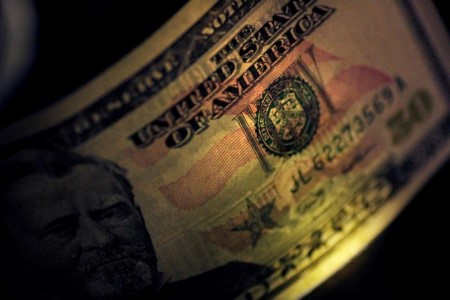




Policy Rate Updates: Double cut finale
 DOWNLOAD
DOWNLOAD

Monthly Economic Update: One for the road
 DOWNLOAD
DOWNLOAD

Inflation Update: Still low, still slow
 DOWNLOAD
DOWNLOAD


Dollar edges higher as investors await Fed guidance

NEW YORK – The dollar edged up against the euro on Monday as investors awaited further clues on the path of US interest rates in the wake of cautious comments from Federal Reserve officials, even as inflation showed signs of cooling.
Federal Reserve officials are not ready to say inflation is heading to the US central bank’s 2% target after data last week showed a welcome easing in consumer price pressures in April, with several on Monday calling for continued policy caution.
Atlanta Fed President Raphael Bostic said on Monday it will take a while for the Federal Reserve to be confident that inflation is on track back to its goal.
“The issue right now is when are we going to be certain that inflation is clearly on a path back to 2%. I think it’s going to take a while before we know that for sure,” Bostic said in an interview with Bloomberg Television.
Speaking at the Mortgage Bankers Association conference in New York, Fed Vice Chair Philip Jefferson said it is too early to tell whether the recent slowdown in the disinflationary process will be long-lasting.
The euro was 0.05% down against the dollar at USD 1.0863. Against the yen, the dollar was up 0.4% to 156.26 yen.
Data last week showed US consumer prices rose less than expected in April, leading to markets pricing in 50 basis points of Fed rate cuts this year.
With little in the way of economic data on the calendar for the day, most major currency pairs clung to tight trading ranges on Monday.
“I think after CPI passed last week the FX market is rather lacking a catalyst at this stage,” said Michael Brown, market analyst at online broker Pepperstone in London.
“While the FOMC (Federal Open Market Committee) calendar is, again, stupendously busy, it seems there’s little fresh information that speakers can add at this stage, especially with the reaction function so well-signposted, another hike all but ruled out, and a couple more promising inflation figures, at least, needed to provide the requisite confidence of inflation returning towards 2% before the first cut can be delivered,” Brown said.
Survey-based gauges of the economy for the eurozone, Germany, the UK, and the United States are due this week.
The euro remained not far from the nearly two-month high of USD 1.0895 it touched last week. It is up 1.8% so far in May, boosted by a fall in the dollar on the back of softer US growth and inflation data, as well as a pickup in the eurozone economy.
With the Japanese yen weaker on the day, traders remained on alert for signs of government intervention. The currency has moved in tight ranges in the past couple of trading days after a tumultuous start to May in the wake of suspected rounds of currency interventions by Tokyo to prop up the yen.
Sterling was up 0.07% at USD 1.2711 on the day after touching a two-month high of USD 1.27255, ahead of a UK inflation report due on Wednesday.
The Australian dollar was down 0.3% at USD 0.6671. The Aussie has risen 3% this month amid high Australian inflation. Monday’s weakness in the commodity-linked currency despite strength in commodity prices bodes ill for the near-term outlook for the Australian dollar, Pepperstone’s Brown said.
“(The weakness) on a day with commodities rallying and equities solid enough, (is) perhaps a canary in the coal mine for antipodean bulls,” Brown said.
In cryptocurrencies, bitcoin was 2.7% higher on the day at USD 68,715, a new five-week high.
(Reporting by Saqib Iqbal Ahmed; Additional reporting by Harry Robertson in London and Ankur Banerjee in Singapore; Editing by Sharon Singleton, Bernadette Baum, Will Dunham, and Jonathan Oatis)
This article originally appeared on reuters.com





 By Reuters
By Reuters